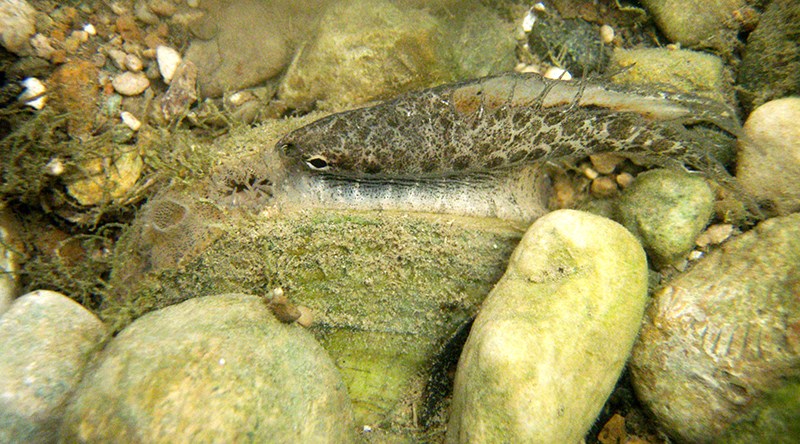George Mathewson
The St. Clair River at Sarnia is home to a rare shellfish that has a life cycle right out of a sci-fi movie.
The wavy-rayed lampmussel looks like a palm-sized clam that lives in the sand and gravel at the bottom of the river.
To survive, the mussel’s larvae must somehow find and latch onto the gills of a smallmouth bass, feeding on nutrients there for a few weeks until the babies are big enough to drop off.
How they find their host is the remarkable part.
The female mussel produces a “lure” that it wiggles around in the water, according to the Ministry of Natural Resources.
When a fooled bass strikes at the lure the mussel ejects its larvae and some inevitably stick and feed, with no ill effects to the fish.
The lures come in different shapes and colours, including black and bright red. Some even bear an uncanny resemblance to a minnow, complete with eyespots and waving fins.
The wavy-rayed lampmussel has long been considered an endangered species but has been found in greater numbers recently, despite competition from the invasive zebra mussel.
That’s good news, because as a sensitive filter feeder that cleans the water their presence is a good indicator of a healthy ecosystem.
Lampmussels live at both ends of the St. Clair River as well as the Ausable, Thames and Grand rivers.
Their status was recently downlisted from endangered to a species of ‘special concern,’ the ministry said.
